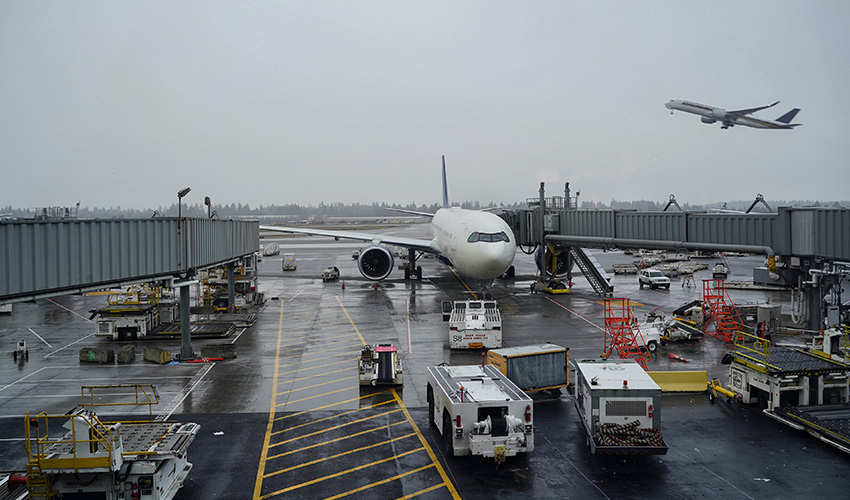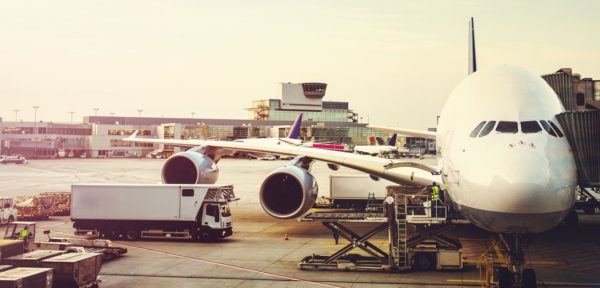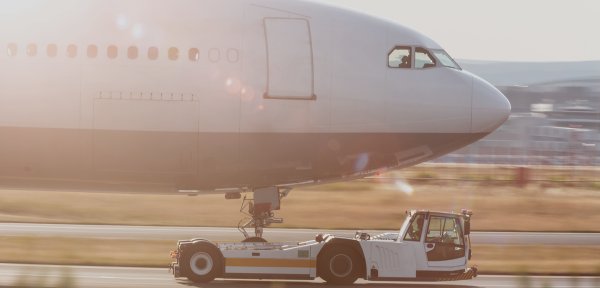As the aviation industry moves to the next stage of the COVID-19 recovery process, airlines continue their efforts to create a safe flying environment. With air travel demand down about 86% in June compared to the same period last year, strategies to bolster passenger confidence become crucial. A recent IATA report shows that 79% of travelers have a great concern about the transmission risk of the virus on a plane. Moreover, in a survey by the Official Airline Guide, 44% of participants ranked aircraft cleaning procedures as the number one consideration to return to the skies. Sanitation appears to be even more critical for demand bounce back than offering low fares, which ranked just 10% in the same study.
From this, one thing is clear: To regain passengers´ trust, airlines must address new hygiene expectations. Scientific research points out that the Coronavirus could also be spread by particles hanging in the air. It is estimated that the virus can survive on surfaces like metal or plastic for a few days. That makes urgent the implementation of enhanced cleaning procedures. Since aviation is dealing with a very volatile context, stepping up such protocols might not be an easy task. In fact, the sector has seen its capacity decrease due to furloughs and quarantine measures. Maintaining the new high hygiene standards will have a significant impact on operations in terms of costs. How can aircraft cleaning tasks be conducted with efficiency?
Using the right data to deliver more operational certainty
Since the pandemic outbreak, the traditional way of planning has been disrupted. The variability in flight schedules and passenger show ups make forecasting a challenge. Relying exclusively on historical data and static rulesets becomes ineffective as the reality changes rapidly. To respond to this dynamic context, carriers need to remain flexible in the way of executing their aircraft cleaning processes. This can be achieved by shortening the planning horizon and adjusting the plans with accurate real-time data.
Digital tools can help make smart decisions and adapt to last-minute occurrences. Machine learning facilitates the creation of all possible What-if scenarios for which resource demand can be easily determined. For instance, planners can develop their estimations based on the risk level of a particular route. Those airplanes coming from COVID-19’s most affected areas will demand more extensive disinfection. Deep cleaning requirements can be factored into the planning solution, enabling an optimal allocation of staff and equipment.
Needs-based allocation of resources
The introduction of enhanced aircraft cleaning programs should be progressive according to the evolving situation. To maximize the utilization of available resources, carriers must estimate the sanitizing requirements in advance. These will be different from case to case, depending on factors such as passenger load, the length of the flight and the rate of local transmission. Understanding the characteristics of each network route can help determine whether additional mitigation measures will have to be enforced.
Current disinfection routines have to be revised following the outcomes of the risk assessment. New and more frequent cleaning procedures will increase the demand for staff and equipment. Constraints in workforce numbers might cause employees to have less time to perform their activities. Ultimately, it can affect the execution of other tasks that start only after the plane is completely disinfected. Prioritizing aircraft cleaning operations based on passenger metrics and the risk level associated with the flight is the key to allocating resources, as necessary.


Keeping personnel qualified and competent
To comply with the strict health regulations, proper training needs to be in place. Whether through online seminars, briefs or updates, staff must acquire knowledge on topics like:
- Sanitizing procedures after a suspected Coronavirus case has been identified.
- Safe manipulation of the different disinfection products.
- Changes in routine sterilization procedures according to specific airline policies.
- Maintaining COVID-19 measures during the cleaning process: appropriate use of personal protective equipment (PPE) and physical distancing, among others.
To ensure disinfection products and techniques are applied following the aircraft manufacturers’ (OEMs) recommendations, carriers may closely coordinate the training programs with ground handling companies. For example, OEM guidance suggests using a 70% aqueous solution of Isopropyl Alcohol to sanitize highly touched surfaces. With a proper application of these chemicals and enough ventilation, the responsible person will avoid any potential damage to the flight deck equipment.
Rationalization of cleaning to save time and costs
Stepping up aircraft cleaning measures involves wiping down high-contact surfaces in the main deck more frequently. This can lead to longer turnaround times and increased costs. To prevent operational inefficiencies, managers have to identify in which cases, more thorough sanitation should take place. An example are surfaces contaminated with body fluids that must be sanitized following health organization guidelines. If no COVID-19 infected subject has been reported on board, routine cleaning protocols might be sufficient.
Since personnel availability is restrained, it is important to evaluate what solutions could facilitate keeping the airplane cabin clean longer. To do so, carriers need to look carefully into in-flight services and passenger behaviors on board. Minimizing waste creation during a flight can help mitigate transmission risks. Some companies have already cut or limited their catering offerings, mostly though due to financial reasons. It can be expected that a major part of the waste generated comes from discarded PPE and other sanitizer articles. Managers will have to focus on optimizing the disposal of such materials.
Other strategies to shorten cleaning frequency without affecting sanitary goals include the exploration of advanced technologies like fogging to speed up the removal of contaminants.
Time to make aircraft cleaning smarter
Cleaning has been traditionally a crucial hygiene factor for the aviation industry. Besides the evident need to comply with health regulations, these tasks contribute to an improved traveling experience. Today, as the Coronavirus remains a global threat, we can expect sanitizing activities to take a central role in operations planning. Several surveys conducted by aviation associations reaffirm how important a clean environment is for restoring passenger trust. Therefore, airlines must keep this topic on top of their agenda.
The introduction of enhanced disinfection protocols is key to fuel traffic recovery. However, it brings along significant challenges for carriers in the form of higher expenses and reduced manpower productivity. When looking at ways to conduct cleaning procedures smarter, managers should rely more than ever on adjusted planning. Some compartments in the plane will demand more extensive disinfection than others. Advanced software supports decision makers in optimally scheduling resources by forecasting multiple scenarios based on relevant available data.
Applying thorough sterilization methods alone may not be sufficient to regain travelers. Additionally, many cleaning efforts remain largely unseen by the public. Communication is crucial to promote how these measures are taking place. This will reassure the public of the carriers´ commitment to keep them safe. Such messaging could be displayed via mobile apps, as many airlines already offer their customers several services through digital platforms. Collaboration with airports will also be paramount to guarantee that new hygiene standards are being followed across the whole passenger journey.





0 comments on “Planning For Enhanced Aircraft Cleaning in The New Normal”